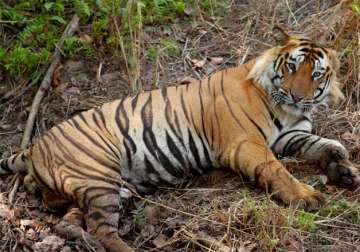Tiger population in North East up
Guwahati: Tiger population in North Eastern hills and Brahmaputra flood plains has increased to 201 in 2014 from 148 in 2010, according to the latest status report on tigers.Assam registered the highest number of 167

Guwahati: Tiger population in North Eastern hills and Brahmaputra flood plains has increased to 201 in 2014 from 148 in 2010, according to the latest status report on tigers.
Assam registered the highest number of 167 tigers, an increase from 143 in 2010, while 28 tigers were estimated in Arunachal Pradesh, showing an increase over 14 in 2006, the report said.
The survey was not held in Arunachal Pradesh in 2010. Besides Assam and Arunachal Pradesh, the other areas included in the status report are Mizoram and north Bengal.
The region includes seven tiger reserves - Manas, Kaziranga and Nameri in Assam, Pakke and Namdapha in Arunachal Pradesh, Dampa in Mizoram and Buxa in West Bengal. Kaziranga National Park in Assam has the highest tiger population of 125, while the minimum number of four each were recorded in Namdapha National Park in Arunachal Pradesh, the report said.
Another report ‘Connecting Tiger Populations for long term conservation', released simultaneously on January 20, said the population of big cats in the area have historical evolutionary significance as they share the connecting gene pool with south east Asian tiger population and represent the entry point of tigers into the Indian sub-continent.
The region has two tiger conservation units(TCUs), one comprising Manas Tiger Reserve, stretching across Bhutan to Arunachal Pradesh in the north east while the other includes Kaziranga in Assam and stretches upto Meghalaya.
The Kaziranga Tiger reserve along with other protected areas surrounding has a tiger population of 125 in the region.
It is connected to the southern parts of the North East landscape via Karbi Anglong Hills for which it acts as a major source but has lost its connectivity to Pakke in the north due to intensive agriculture on the northern banks of Brahmaputra river.
Kaziranga is contiguous with Orang National Park and connected through island systems of the Brahmaputra. Nameri too is connected through riverine corridors which is an important connectivity maintaining gene flow between the plains and the hill populations of tigers in Arunachal Pradesh, according to the report.
These connectivities between the various national parks and wildlife sanctuaries form the crucial element for targeting conservation efforts.
Manas Tiger Reserve was camera trapped and tiger density was estimated to be 1.8 tiger per 100 square kilometre but the region has higher potential and with control of poaching of prey, tiger densities are likely to increase substantially, especially in its southern parts.
Nameri in Assam is contiguous to Pakke in Arunachal Pradesh and the tiger population in them is small with about nine together, the report said.
The area, it said, has potential for higher densities and ability to sustain a larger population of tigers but depletion of prey by poaching and other disturbances have led to decrease in tiger population.